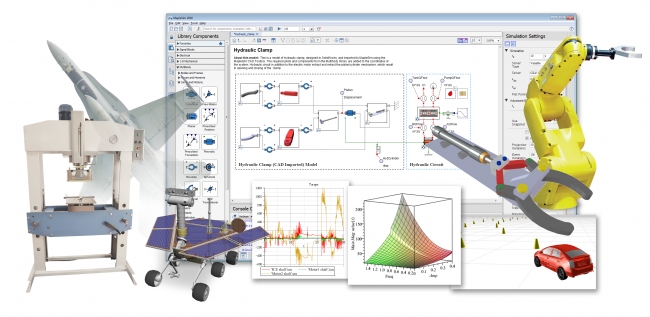3 minute read
Model-Based Systems Engineering for Industry 4.0
With the rising complexity of virtually every aspect of engineering design, many companies are adopting tools and techniques to keep their high-level requirements organised and consistent across the entire project. Laurent Bernardin from Maplesoft looks at how Model-Based Systems Engineering (MBSE), in particular, is becoming the foundation for companies that need a quick, accurate understanding of how a design change will impact the requirements of every other aspect of the project.
Within the MBSE space, many tools are available for managing system-level requirements and allowing engineers to see the dependencies of a system, across all the domains involved. These tools help deal with rising complexity; however, they traditionally rely heavily on textual descriptions of requirements. As a result, when it comes to making informed choices on trade-offs and design issues, the engineer is often left sorting through thousands of dependencies, in an effort to understand the full impact of a change in requirements. While sufficient for smaller pilot projects, this technique presents large barriers for large-scale projects.

With the rising complexity of virtually every aspect of engineering design, many companies are adopting tools and techniques to keep their high-level requirements organised and consistent across the entire project / Picture: Getty/iStock
Large-scale projects present other, often unforeseen difficulties for traditional MBSE tools. When navigating and modifying many requirements manually, human error becomes increasingly likely. A study presented at the 36th International Conference on Software Engineering revealed that a large fraction of errors with MBSE tools are due to typos, missing entries or misplaced data1. These simple mistakes can compound dramatically if they’re not caught early. With large projects, the process to catch these errors either becomes extremely time consuming, or some amount of errors is absorbed as the cost of a large project.
If MBSE tools are going to manage these large projects, they need to incorporate better ways to automate more aspects of requirements management. For many requirements, this automation is made possible with mathematical equations that refer to model-based definitions of the key systems in a project. Taking things a step further, certain MBSE tools, like MapleMBSE, will incorporate the mathematics in symbolic form or as 1D system level simulation models which provides algorithmic approaches to ranking of dependencies, sensitivity analyses and more. For projects with thousands of dependencies, using a symbolic, executable system of requirements helps give engineers new abilities to reduce errors and make informed trade-offs.

1D Simulation, seen here using system-level modelling software like MapleSim, provides the basis for scalable, algorithmic ranking of dependencies in MBSE / Picture: Maplesoft
With these equation-based approaches to MBSE, engineers can free up much of the time they would previously spend inputting, updating and ranking dependencies. Once a model-based definition exists for a given system or sub-system, the requirements are linked together in a way that is executable and understood by the MBSE program, allowing algorithms to process and manage dependencies using the underlying mathematical models. All this automation will directly reflect a savings in time by systems engineers, as is evident with a recent implementation by Nissan. Engineers at Nissan used MapleMBSE to aid in development of an engine sub-system, and compared their productivity against a previous MBSE tool they used. They found that the symbolic, model-based approach with MapleMBSE allowed the engineers to perform their tasks four times faster than with their previous MBSE tool.
Even with a sophisticated, symbolic approach to MBSE, engineers will need to exercise their expertise for describing requirements. Many of these requirements continue to exist as soft descriptions that can’t be explicitly encoded as a mathematical, model-based definition. For this reason, many organisations may have been comfortable with their traditional approach to requirements management. However, as the complexity of projects continues to scale, even converting 20 percent of a project’s requirements into model-based definitions can stand to offer a significant improvement in increasing productivity, reducing errors and ensuring a better product. Soft requirements can continue to coexist with their mathematical-based counterparts, and over time more requirements can be captured with scalable, model-based techniques.
When choosing between MBSE tools, it’s important to future-proof your methodology for the growing complexity of engineering projects required by Industry 4.0 trends. Model-Based Systems Engineering tools are now incorporating executable requirements in the form of mathematical equations and 1D models. Sophisticated algorithms can now perform sensitivity analysis across subsystems, allowing engineers to analyse the impact of requirements automatically, and provide powerful analytics for making quick, accurate assessments of a design change. Whether you’re just beginning to explore MBSE tools, or are looking for a more powerful tool for complex projects, now is the time to consider incorporating a symbolic, model-based approach to systems engineering.
